Dumbbell Nebula (Messier 27)
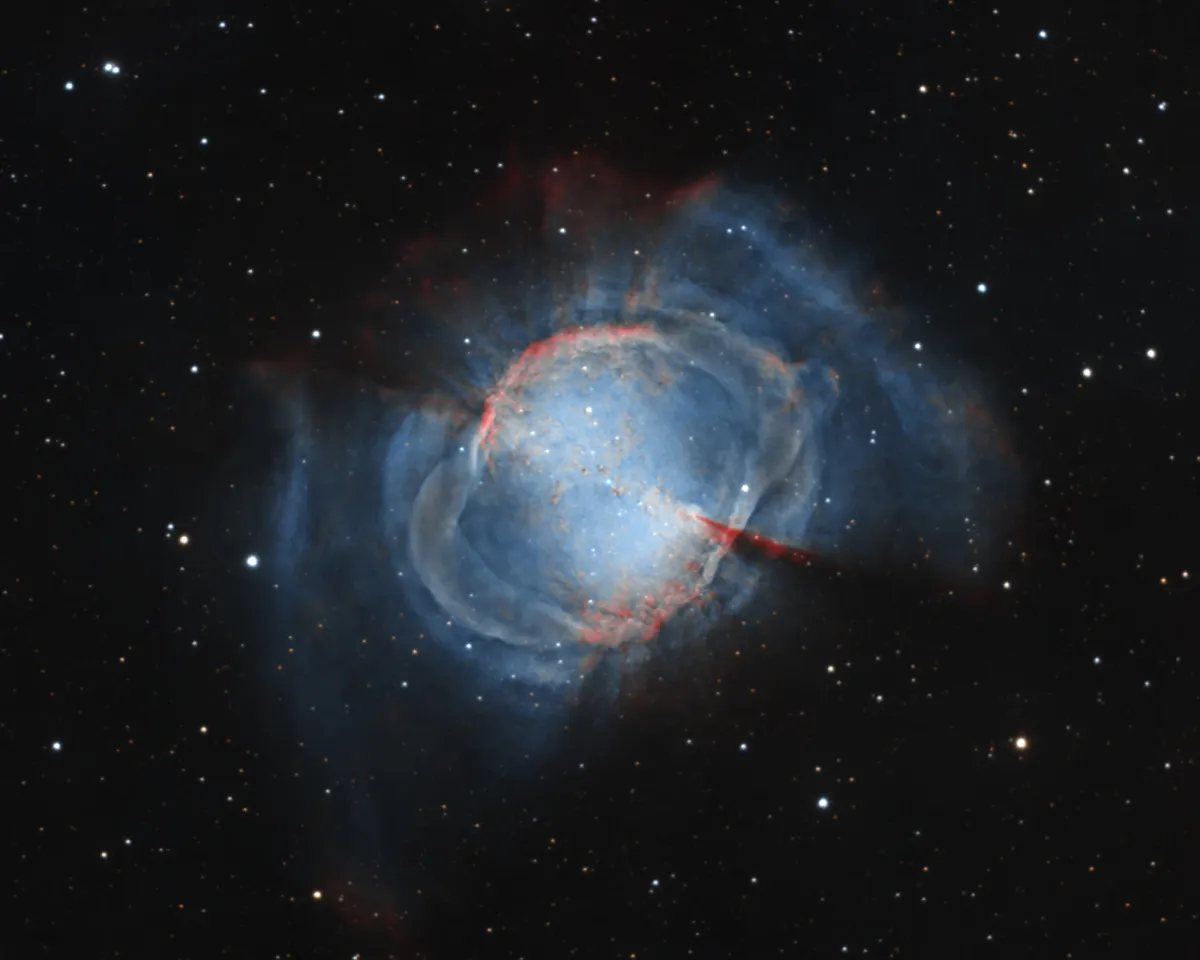
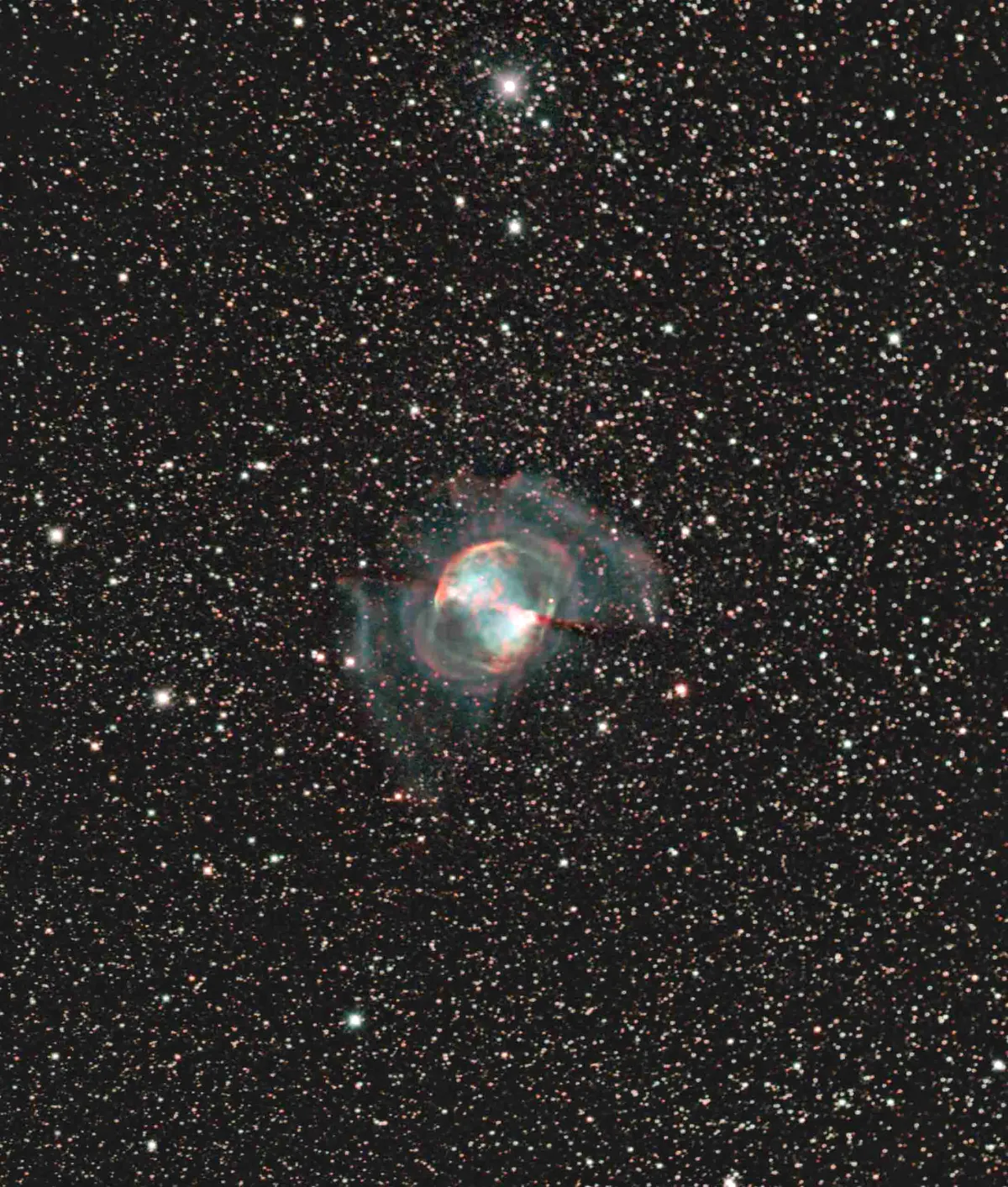
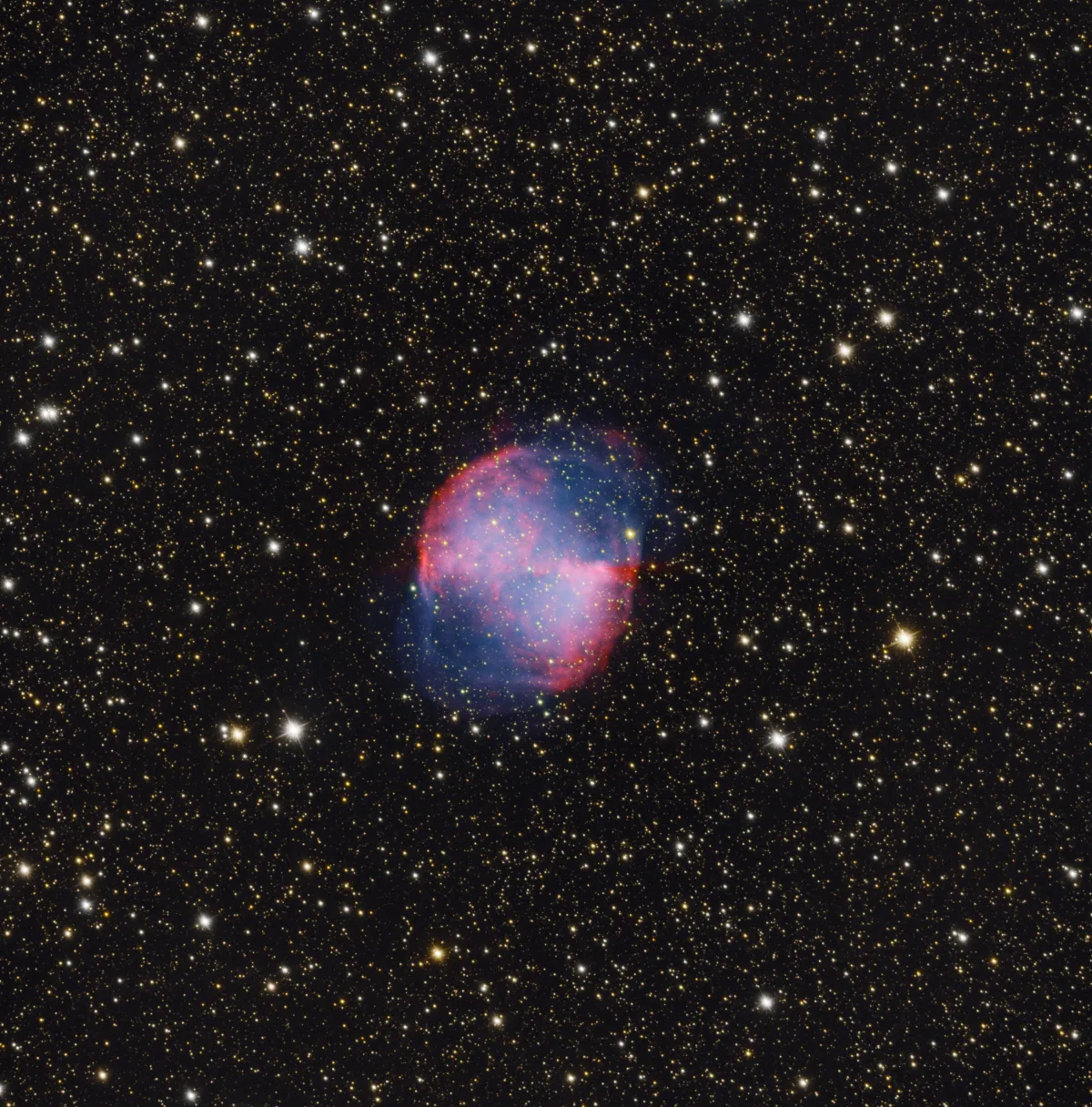
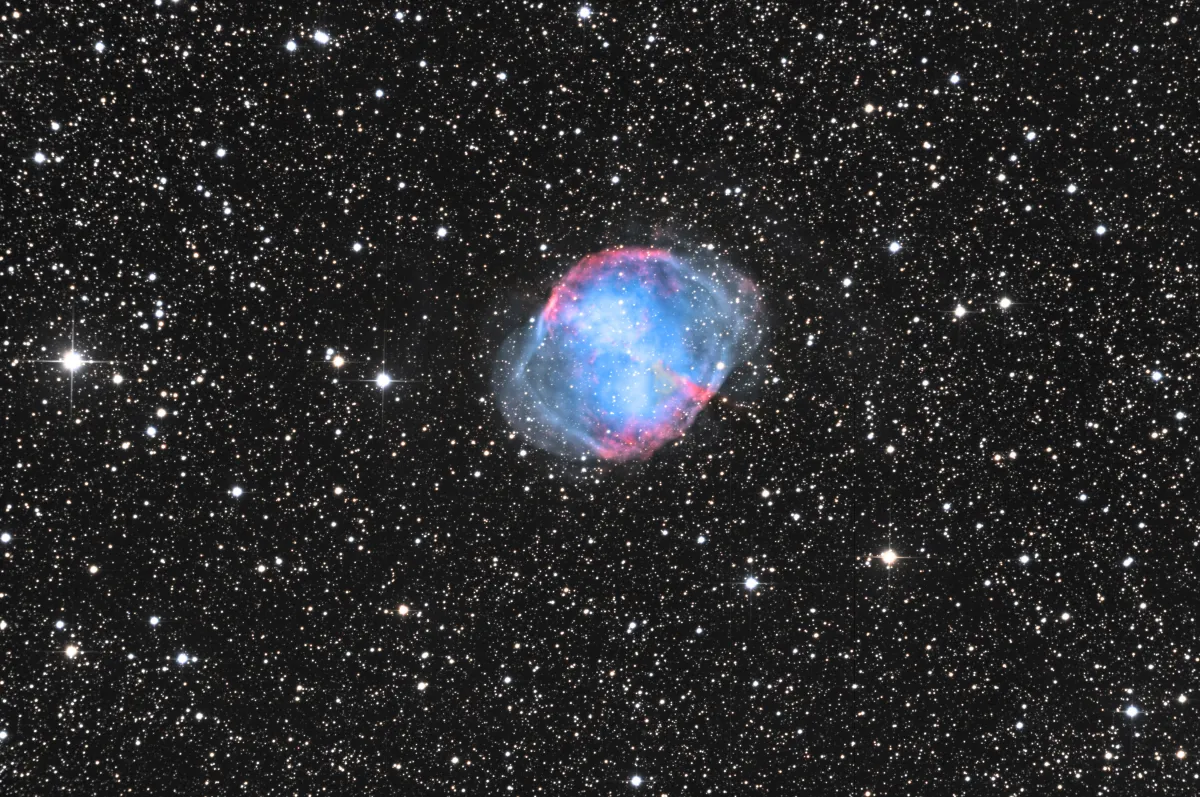
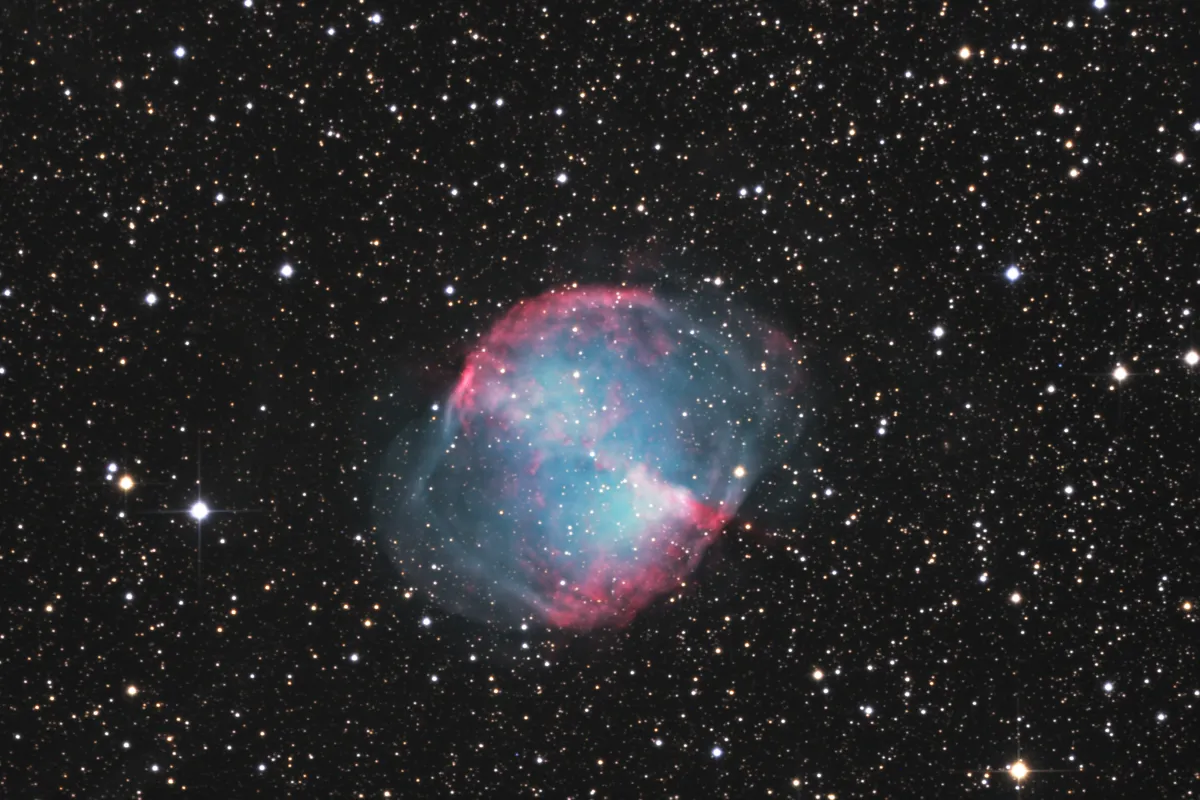

History
Messier 27 or the Dumbbell Nebula is probably the most striking planetary nebula in the northern starry sky. It was discovered by Charles Messier on 12th July 1764. He wrote about it: «Nebula without a star, discovered in the Fox, between the two front legs, and very close to the 14th star of this constellation, 5th magnitude according to Flamsteed; it can be clearly seen with an ordinary telescope of 3 and a half feet: it appears in an oval shape, and contains no stars.» [281] T. W. Webb compared the nebula to a dumbbell because the shape of the nebula reminded him of two connected masses. [4]
Physical Properties
The large apparent diameter of the PN suggests that it is relatively close to us. The calculated distances vary from 300 to 1250 light years. If one assumes that the nebula is at a distance of close to 900 light years, M 27 would be one of the largest PNs of this type with a true diameter of almost 2.5 light years. The expansion speed of M 27 found by spectroscopic analysis is around 27.3 km/s. According to measurements on astrometric photographs, the nebula grows at about 1 arc seconds per century, according to other sources it is even 7 arc seconds. If one assumes that the rate of expansion is relatively constant, one arrives at an age of the nebula of about 48'000 years, about two and a half times the average age of a typical bright planetary nebula. According to other measurements, it is 20'000 years old. M 27 consists of about 92% hydrogen, 7% helium and traces of oxygen, nitrogen, neon, sulfur and argon. These gases shine in specific wavelengths, M 27 shines very strongly on the O-III line of double ionized oxygen. Around the bright nebula, which is about 5.8 arc minutes in diameter, there is still a faint halo 15.2 arc minutes in diameter.
The central star is about 13.8 mag bright and would have about half the luminosity of the sun at the distance. As in all planetary nebulae, er is an abnormal, hot blue dwarf or sub-dwarf with the spectrum resembling that of a past nova. The calculated surface temperature is around 85'000 Kelvin. K. M. Cudworth of Yerkes Observatory noted that the central star may be a physical binary star. The companion is a yellowish star 17. Magnitude, about 6.5 arc seconds in the direction of 214° from the main star. With the previously assumed distance, the two stars are about 1800 AU apart and have the absolute magnitudes of +6.2 mag and +9.7 mag. The The first shows a fairly continuous spectrum and stimulates the nebula to glow with its strong UV radiation. [4]
| Designations | PN G060.8-03.6: NGC 6853, PK 60-03.1, ARO 14, He 2- 452, M 27, VV 246, VV' 521 |
| Right Ascension (J2000.0) | 19h 59m 36s |
| Declination (J2000.0) | +22° 43' 01" |
| Dimensions | 402." (optical) |
| Distance | 0.32 kpc |
| Radial Velocity | -41.8 ± 0.8 km/s |
| Expansion Velocity | 15.0 (O-III) 31.5 (N-II) km/s |
| C-Star Designations | AG82 393, CSI +22 -19572, GCRV 12336, PLX 4735 |
| C-Star Magnitude | U: 12.43, B: 13.66, V: 13.94 |
| C-Star Spectral Type | O7, O(H) |
| Discoverer | HUGGINS 1864 |
Finder Chart
Vulpecula is located south of the star Albireo of the constellation Cygnus. There are hardly any stars in it that can be used for orientation - but the small, prominent constellation Sagitta is very useful in this regard: the star γ Sagittae has roughly the same right ascension as the dumbbell nebula. If you align the telescope so that the star appears on the western edge of the image in the eyepiece and then move it about three degrees to the north, you can easily get to the dumbbell nebula.
Visual Observation
320 mm Aperture: The shape of the dumbbell is easily recognizable. The ears appear almost intrusive with the nebula filter. The ears are thickened towards the outside and look like the handle of a cup. The fine stars within the nebula are clearly visible without a filter. Without a filter, the nebula looks much more aesthetic. The ears are also clearly visible without a filter, even if not as strong. — 12.5" Ninja-Dobson, F:4.5 / TV-Nagler 13mm, 111x, 0.74° / with and without OIII-filter, Eduard von Bergen
400 mm Öffnung: This bright planetary nebula is always an impressive sight, with and without an O-III filter, where even the untrained eye of visitors can make out details, both at low and higher magnifications. The ears are clearly visible. With O-III the contrast to the background is much higher, but I like the view without filter much better among all the fine stars of the Milky Way. — 400 mm f/4.5 Taurus Dobsonian, Glaubenberg, 17. 6. 2023, Bernd Nies
